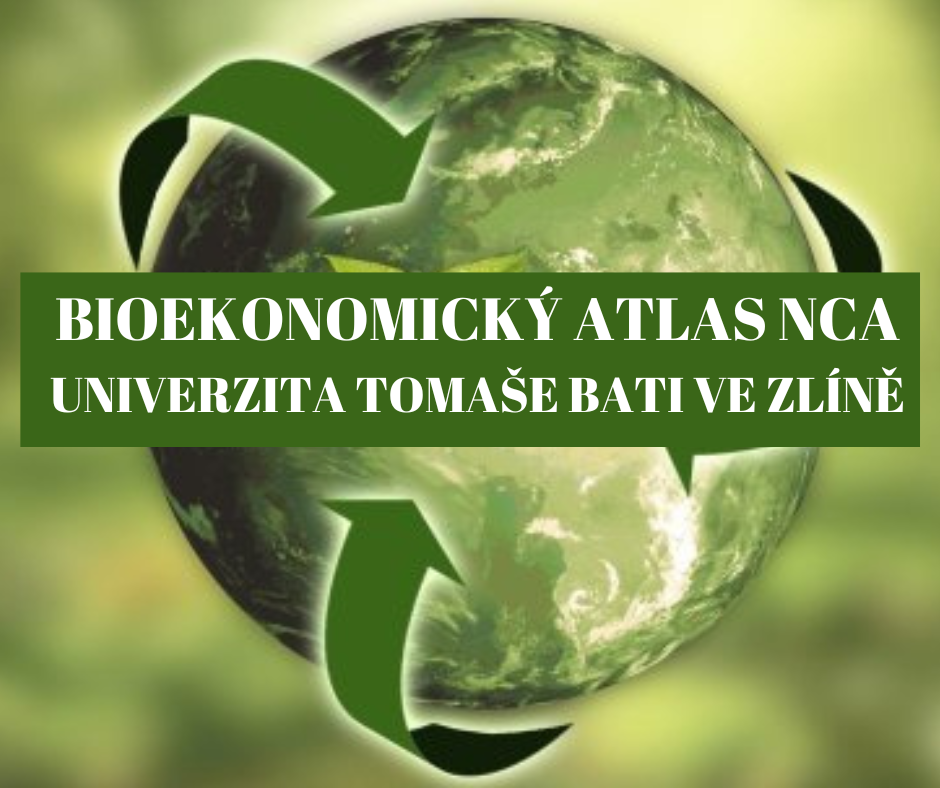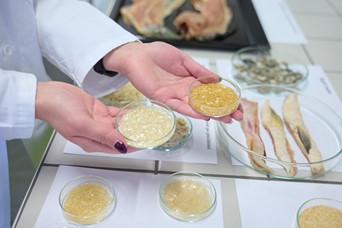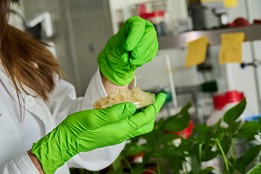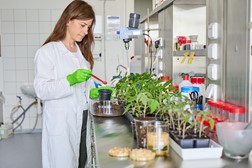Tomas Bata University in Zlín - Bioeconomic atlas NCA, Czech clusters and their members

Tomas Bata University in Zlin introduces the Institute of Environmental Engineering and Institute of Polymer Engineering, which is part of the Faculty of Economics and introduces the Centre for Polymer Systems. Together, they contributed to the Bioeconomic Atlas NCA. The atlas was created thanks to the projects DanuBioValNet (01/17-06/19) and GoDanuBio (07/20-12/22), co-financed by the INTERREG DANUBE programme.
Tomas Bata University in Zlin (UTB)
Tomas Bata University is an open and flexible university that builds its development on five central values: entrepreneurship, openness, usefulness, creativity and responsibility. Thanks to this, it is one of the first universities in the Czech Republic to receive prestigious institutional accreditation. More than 9000 students study at the six faculties of UTB, of which about 10% are foreign students. In research, UTB has significant results, especially in the fields of polymer engineering, applied informatics and creative fields.
The University is regularly rated very highly in international comparisons. The prestigious British company Times Higher Education has ranked it between positions 301-350 in the Young University Rankings (2020). According to the 2020 rankings compiled by the British company QS World University Rankings, our University is ranked 85th among universities in Central and Eastern Europe and Central Asia. One of the priorities of the University of Zlín is its approach to the environment. In 2020, it appeared for the first time in the World University Rankings - Green Metric. This ranking ranks universities from all over the world based on how they manage waste or water, for example, or how energy-efficient their buildings are. Also, among the research, education and artistic projects of academics, several dozen of them focus on environmental issues and renewable resources, including biological ones. Bioeconomy research and development is mainly carried out by departments in the Faculty of Technology and the Centre for Polymer Systems.

Nam. T. G. Masaryka 5555
706 01 Zlin
VIEW THE BIOECONOMIT ATLAS NCA
Faculty of Engineering
The Faculty of Engineering is the oldest and founding faculty of Tomas Bata University. Its study programmes, as well as scientific research activities, are focused on material sciences, polymers, production engineering, food science, cosmetics and environmental protection. In the field of polymer engineering or process control, it is one of the world leaders. Several research groups, mainly from the Institute of Environmental Engineering and the Institute of Polymer Engineering, are involved in activities related to the bioeconomy, renewable resources and biopolymers.
Institute of Environmental Engineering
Is it possible to solve the problem of environmental contamination by microplastics? This is the focus of a research group led by Prof. Mgr. Marek Koutný, Ph.D., who is involved in a unique European project SEALIVE. The project will result in sample solutions for some typical plastic products. These are mainly food packaging, agricultural films or fish containers. The entire life cycle from production to recycling, disposal or biodegradation should be addressed for these products.

"The problem of plastic waste is complicated because plastics are simply great and perhaps too cheap. Therefore, we need to search, test and evaluate possible alternatives constantly. The issue of biodegradable plastics has been a long-standing concern of the faculty. The properties of biopolymers can be influenced by various additives. However, we must be careful that additives do not have a negative impact on the environment and do not hinder natural degradation. Therefore, we are currently looking for and testing the applicability of specific additives. For example, we are testing substances that are used in other plastics or some natural substances."

Prof. Mgr. Marek Koutny, Ph.D.
Institute of Polymer Engineering
Did you know that fish processing by-products, which are not yet used for human nutrition or have not yet found another economical use, account for up to 50% of the fish's live weight and represent a large amount of unused raw materials rich mainly in protein, fat, minerals and vitamins? In this spirit, scientists from the Faculty of Engineering, headed by Professor Pavel Mokrejš, have focused on investigating the potential use of residues from common carp, the most popular and most consumed fish in the Czech Republic. The research team's work focuses on processing the waste skeletons (bones, skin, fins and scales) of common carp into gelatins. The conversion of collagen (animal protein) into gelatins uses an unconventional biotechnological method that involves the use of a commonly available food proteolytic (digestive) enzyme. Compared to other similar studies, the innovative element here is also the processing of collagen by multi-stage extraction, which significantly increases the overall yield of the prepared gelatins. This exceptional technology has also been patented by the research team from UTB Zlín.
"Many fish processing plants do not engage in recycling technologies, wastewater is discharged into the aquatic environment, and solids end up in landfills and veterinary sanitation facilities. In both cases, this is a burden on the ecosystem and a waste of raw materials that contain valuable nutritional components. The gelatins obtained by our method are helpful in the food, pharmaceutical and cosmetic industries. During the processing of carp skeletons into gelatins, a number of by-products are produced - and these can also be used. For example, the pigment, a by-product of the centrifugation of the gelatine fractions, can be used in the production of paints and coatings. The centrifugation of the gelatine fractions also separates the residual fat, which can be used as a nutritional supplement because it contains omega-3 fatty acids. The remaining undecomposed fraction can, in turn, be used in agriculture as a nitrogen-rich fertiliser."

Prof. Ing. Pavel Mokrejs, Ph.D.

Gelatines
Centre for Polymer Systems
The Centre for Polymer Systems (CPS) is a modern scientific workplace engaged in research, development and education in the field of polymer materials and their applications in practice. With expertise, cutting-edge technical facilities and cross-disciplinary collaboration, it develops materials and technologies for sustainable living. CPS's state-of-the-art infrastructure and maximum expertise allow for detailed analysis of the structural, chemical, physical or biological properties of materials and processing options and collaboration with industry for development and innovation. The focus of the Centre is on macromolecular materials and technologies that take into account environmental and socio-economic needs.
Environmentally friendly hydrogels
How can we help retain water in the landscape, increase soil retention and reduce the negative impacts of drought on agriculture? Researchers from the Centre for Polymer Systems at the University, in cooperation with the Research Institute of Dairy Industry s.r.o., LACRUM Velké Meziříčí s.r.o. and the Research Institute of Melioration and Soil Protection, v.v.i. Hydrogels are one of the promising materials whose popularity in agriculture is growing. They improve soil quality by their ability to absorb rainwater or irrigation water and make it available to plants again in times of drought. In addition, they affect soil structure, promote microbiological activity in the soil, improve soil quality and stimulate plant growth.
The main component of the hydrogel is acid whey, which is currently difficult to use economically. It is a by-product of the production of fresh cheese and cottage cheese. It is estimated that almost 50 % of the whey produced is not used and is a burden on the environment due to the difficulty of disposal.
"Commercial hydrogels are already available on the market, mostly based on petroleum products, whose biodegradability and safety are questionable. Therefore, our research group is dedicated to the development of eco-friendly hydrogels that are made from purely natural, fully degradable, readily available and low-cost raw materials that do not pollute the environment. Their use will, therefore, bring both environmental and economic benefits. The use of acid whey for the production of hydrogels can minimise waste and at the same time help to increase the availability of nutrients in the soil for plants, thanks to the high mineral content of whey."

Prof. Ing. Vladimir Sedlarík, Ph.D.


Hydrogels